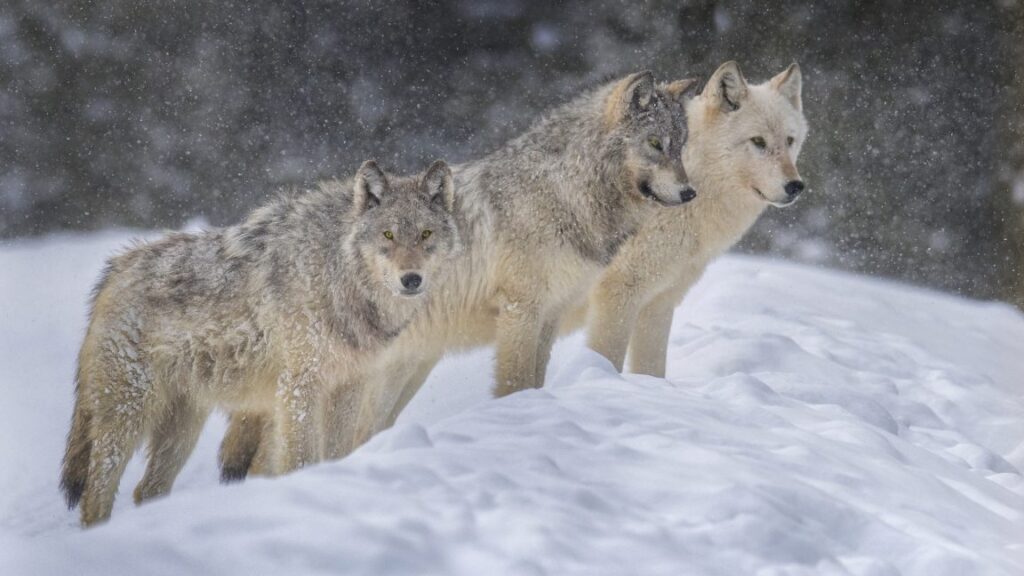
The story that data reveals is complicated—but somehow very human.
Until about 13,600 years ago, any wolf living in what is now Alaska would have lived on the usual wolf diet: rabbits, moose, and a whole range of other land animals. But starting around 13,600 years ago, the nitrogen isotopes locked in ancient wolves’ bones suggest that something changed. Some wolves still made their living solely by hunting wild game, but others started living almost entirely on fish. Since it’s unlikely that Alaskan wolves had suddenly taken up fly fishing, the sudden change probably suggests that some wolves had started getting food from people.
They’re good dogs, Brent
The fact that we kept trying to befriend wolves is starkly clear at a site called Hollembaek Hill, where archaeologists unearthed the 8,100-year-old remains of four canines. Their diets (according to the nitrogen isotopes locked in their bones) consisted mostly of salmon, so it’s tempting to assume these were domesticated dogs. But their DNA reveals that all four—including a newborn puppy—are most closely related to modern wolves.
On the other hand, the Hollembaek Hill canines didn’t all look like wild wolves. At least one of them had the large stature of a modern wolf, but others were smaller, like early dogs. And some of their DNA suggests that they may be at least part dog but not actually related to modern dogs. Lanoë and his colleagues suggest that people at Hollembaek Hill 8,000 years ago were living alongside a mix of pet wolves (do not try this at home) and wolf-dog hybrids.
All modern dogs trace their roots to a single group of wolves (now extinct) that lived in Siberia around 23,000 years ago. But sometime between 11,300 and 12,800 years ago, the canines from Hollembaek Hill and another Alaskan site called Swan Point had dog DNA that doesn’t seem related to modern dogs at all. That may suggest that dog domestication was a process that happened several times in different places, creating several branches of a dog family tree, but only one stuck around in the long run.
In other words, long after humans “invented” dogs, it seems that people just kept repeating the process, doing the things that created dogs in the first place: allowing the friendliest, least aggressive wild canids to live near their villages and maybe adopting and feeding them.